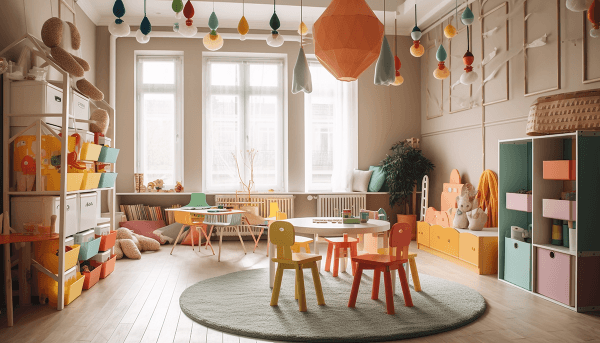
If your child receives in-home ABA therapy, your home becomes more than just a place to eat and sleep — it becomes a space for learning, emotional growth, and connection. For many families, especially those just getting started with ABA, creating the right environment can feel overwhelming.
But here’s the good news: building an ABA-friendly house doesn’t require a full home makeover. With a few thoughtful changes, you can create a space that supports your child’s unique needs while also making in-home sessions smoother and more productive.
This guide is for parents, grandparents, and caregivers who want to make their home a supportive, structured, and calming environment for ABA therapy — and for everyday life.
One of the simplest—and most effective—things you can do is designate a consistent therapy space. Having a specific area where your child knows, “This is where we do therapy,” helps signal structure and focus.
Even a simple setup can help your child transition more easily into learning mode.
Many children on the autism spectrum have unique sensory preferences. Bright lights, loud sounds, or visual clutter can quickly overwhelm them, especially during structured activities.
This type of environment not only supports in-home ABA therapy sessions, but also helps your child feel more relaxed and focused throughout the day.
Children often thrive when they know what to expect. Visual supports are a key part of many ABA programs — and they can easily be used at home to make routines clearer and transitions smoother.
These tools are especially helpful in reducing anxiety and improving communication, particularly during times of change or transition.
Every home can benefit from a designated calming area — not as a punishment, but as a safe and comforting place your child can go when they need to regulate.
This space encourages emotional self-awareness and gives your child a supportive outlet when things feel overwhelming.
One of the best ways to make a home ABA setup feel safe and inviting is to involve your child in the process. This builds trust, gives them a sense of ownership, and may even improve participation during therapy.
Small choices like these promote independence and collaboration — two important parts of ABA.
An ABA-friendly house isn’t a one-time project. As your child builds new skills and reaches developmental milestones, your home environment may need to shift.
This kind of flexibility helps your home remain supportive, even as therapy goals evolve.
Creating an ABA-friendly home environment doesn’t mean creating a perfect one. What matters most is that your space feels safe, predictable, and supportive — for your child and for your family.
Whether you’re just getting started with in-home ABA therapy or you’re fine-tuning your current setup, small changes can make a big impact. And remember: you don’t have to do it alone. The Kiwi Kids ABA team is always here to help with ideas tailored to your child’s unique needs.
Visit our Parent Resources page or talk to your therapy team for personalized support on making your home more ABA-friendly.

Table of Contents
Our team of experienced therapists is dedicated to helping children with autism and other developmental disabilities reach their full potential. We are committed to creating a supportive and nurturing environment where every child can thrive.
Contact us today to learn more about our services and how we can support your child's development.